“One may be in the midst of a city, and yet feel as if they were in the forest, far away from the dust and din of civilisation...”
-Okakura Kakuzo, the Book of Tea
Tea
House
Tour
This tea house is an intervention in an unused and hidden urban space.
The design is concerned with a single experience:
This gathering is primarily understood through Tea Life, Tea Mind,
written by 20th Century Tea Master Sen Soshitsu XV. His Urasenke lineage traces to the original 16th Century Tea Master Sen Rikyu.
Axonometric Breakdown
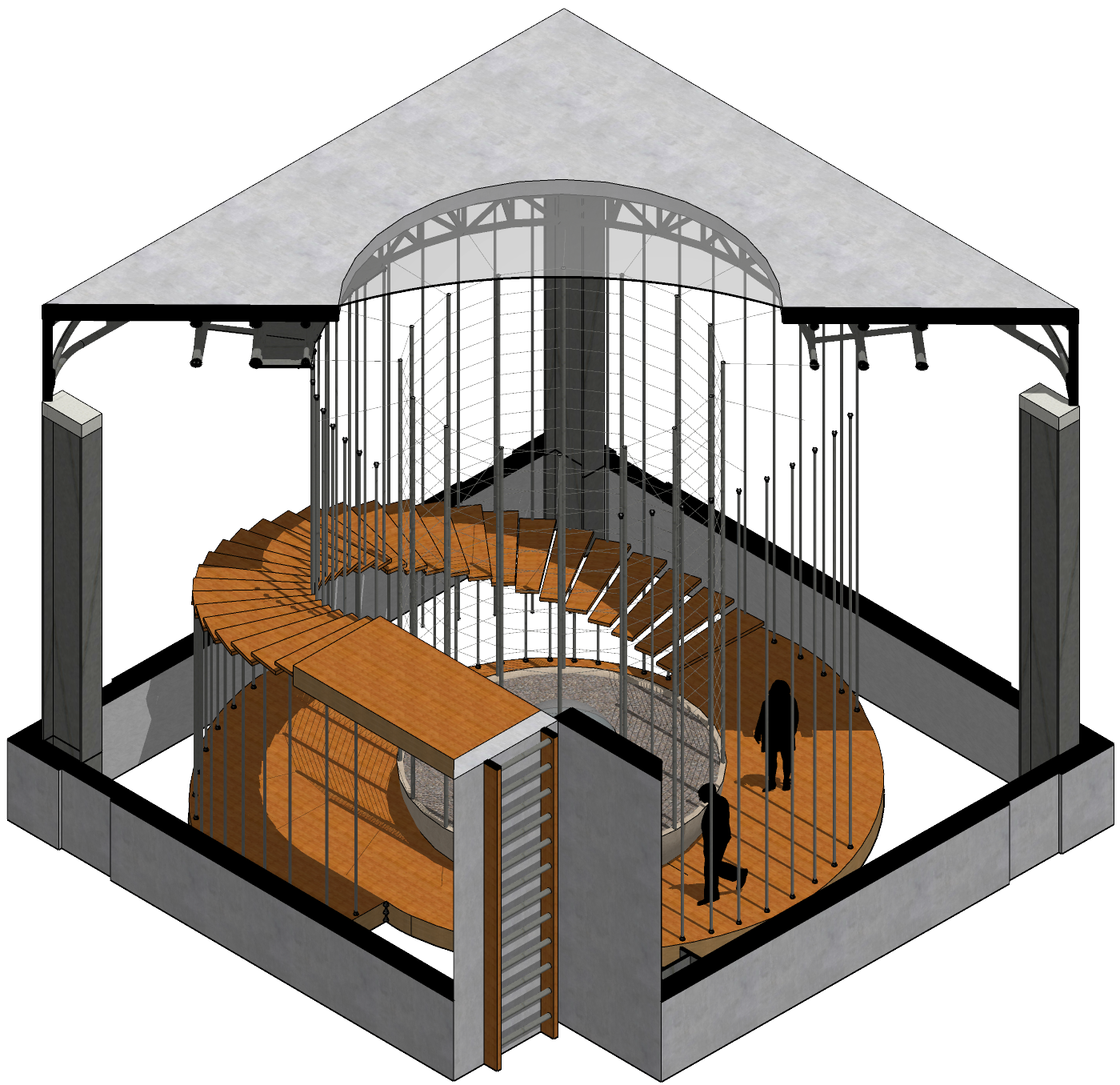
Top Floor: Welcome
にじり口, Nijiriguchi:
Guest’s Door, a Crawling-In Entrance
To enter a traditional tea house, one has to take off their shoes and stoop through a very small, low door. This humbles people of all rank and social status.
A long ladder has a similar effect.
チャバナ,Chabana:
Flowers, set loosely in a vase
“Flowers, arranged as they are in the field”
-Sen Rikyu, Rule no. 7.
Traditionally, chabana flowers are few, beautiful, and allowed to overflow their vases. Here, the vase, fed from far below, encourages the vining flowers to overflow and join the structure of the building.
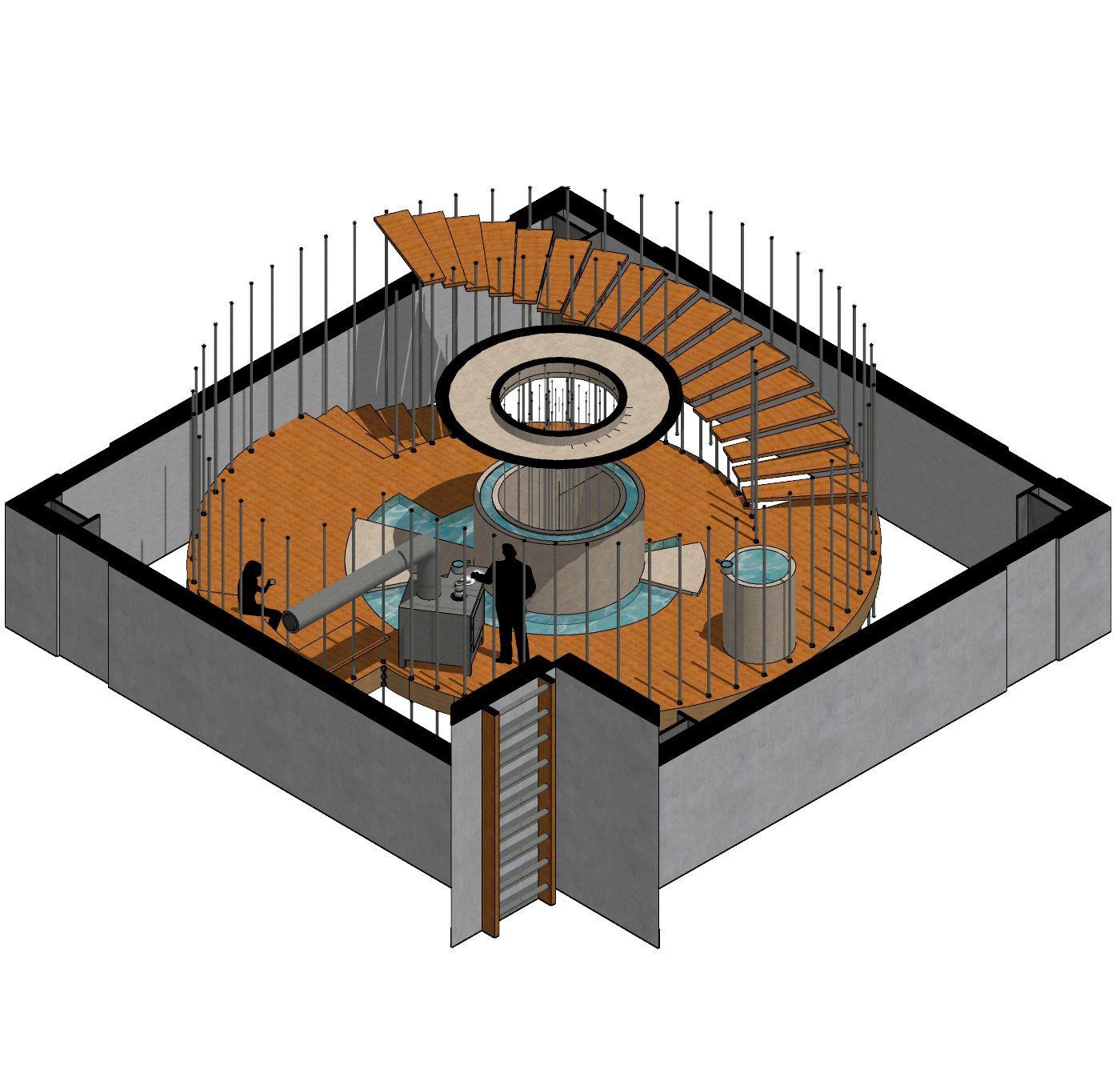
Central Floor:
Ceremony
人間, Ningen: Human
人, Hito: Person |間, Ma: Space, Interval
“When host and guest are in harmony at a tea gathering, they merge into a single entity that transcends their respective roles.”
-Sen Soshitsu XV
At the core of this work is the experience of the host and guest as they serve, recieve, and drink tea together. An intimate, indirectly lit space pulses with the energy of the water moving through it, which settles to create space for reflection.
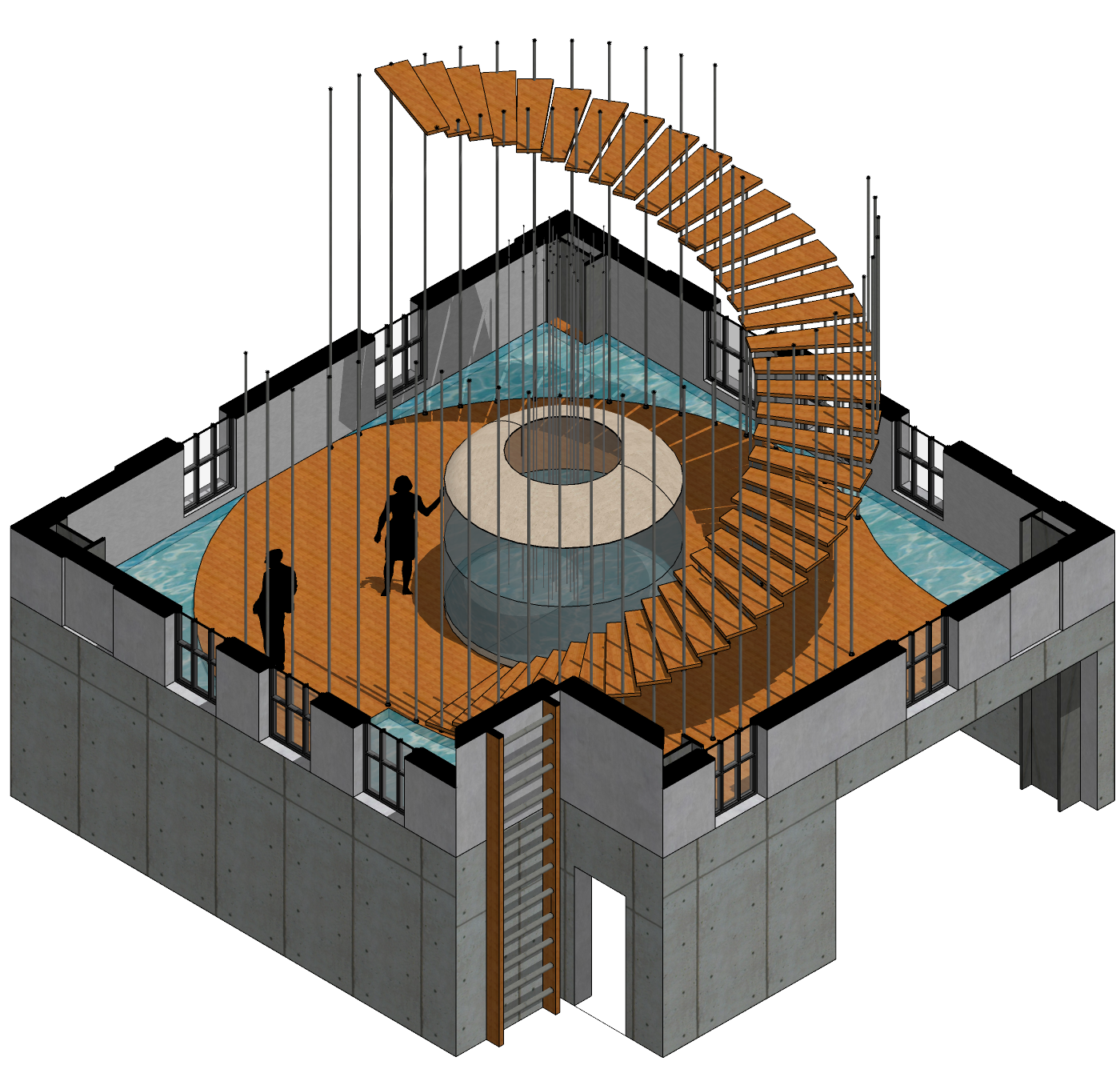
Lower Floor: Basin
“Lay the charcoal so it heats the water”
-Sen Rikyu, Rule no. 2
Following the longest and final set of spiral stairs, the host and guest’s journey ends where the water’s journey begins. A central basin is passively heated, and from it ascend the capillary tubes which feed the ceremony room and vase.
A grand, high ceiling elicits a feeling of release following the more confined ceremony. Windows look out in all directions, a visual reminder of the surrounding city, helping ease the tea-takers back into the world beyond.
“Nothing extraordinary has happened from the perspective of the casual onlooker, but at its best, the experience of both host and guest has been a microcosm of life itself.”
-Sen Soshitsu XV
On Site (Above a Parking Garage)
As seen in the photo below and matching streetview to the right, this maintenance tower atop an art-deco parking garage on 17th and Glenarm used to serve as an easily-spotted bilboard in the business district, but now sits quietly and awkwardly amongst its skyscraper neighbors.
 Above: Boggio’s Parisienne Rotisserie, 1951; Denver Public Library
Above: Boggio’s Parisienne Rotisserie, 1951; Denver Public LibraryThe condition of the tower itself is deeply unused, but not entirely neglected. Discarded equipment lives in the five-story shell, and with minimal exterior modifications it will hold the tea house.
Primary site considerations included its inherent privacy, limited direct sunlight, and the noise from the street below.



Object of inspiration - Family Heirloom
The primary experiential driver for this project is that of the host and guest, and the traditional texts which inform it. However, strongly in complement is the design and function of an objêt d’art: An heirloom coffeemaker.
Following their escape from The Holocaust in Hungary, my grandparents were married at the Great Synagogue in Rome. Before leaving for the United States, they bought a stovetop Moka Pot, nicknamed La Caffetteria Signora: “The Coffeepot Lady”.
For my grandmother’s full story, see this wonderful article from the Atlanta Journal-Constitution.
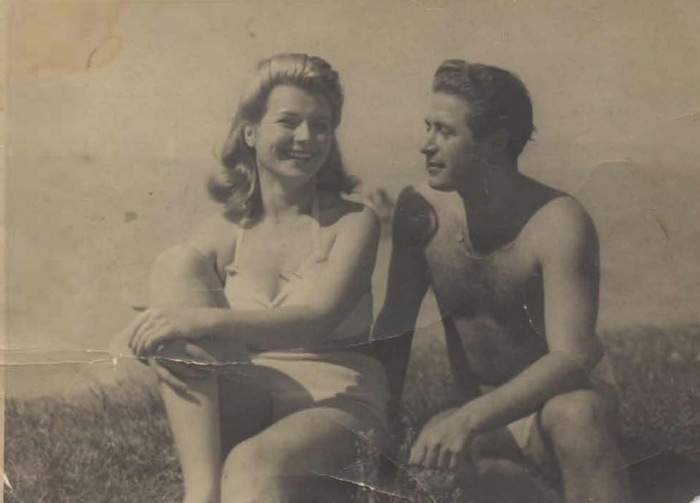
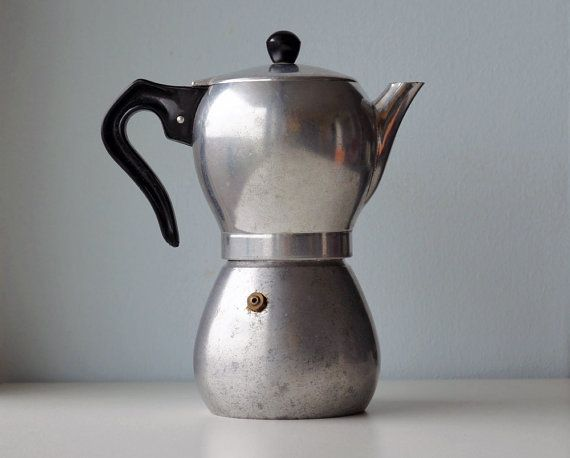

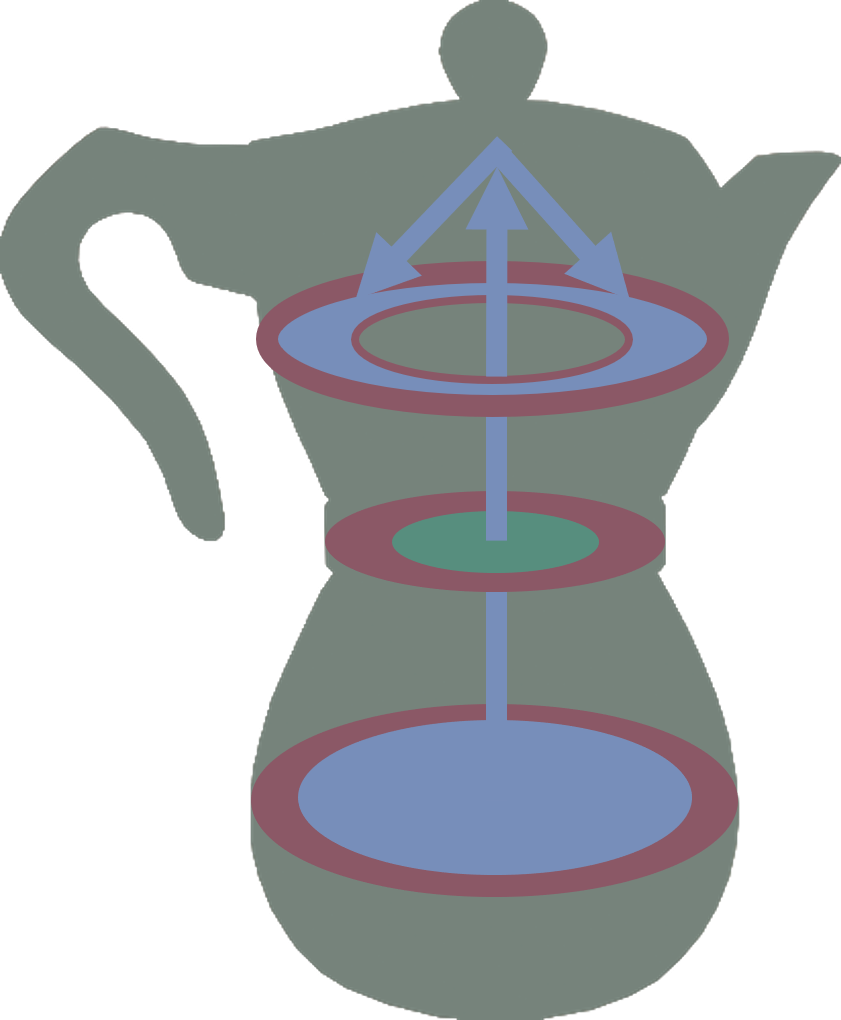
My grandparent’s coffeemaker, though old and worn, functions the same as any modern Moka Pot. On the heat of the stove, water in the bottom basin is heated, passes through the ground coffee in the midle, and deposits in the top to be poured and enjoyed. This simple but highly elegant function demanded further exploration and connection:


Expansion, Contraction, and Transformation of Matter and Energy Across Natural Systems
Water resists the ever-present pull of gravity, first being pulled from the ground by plants and then into the sky by the sun. Eventually, though, it returns to the earth to begin the cycle again.
Meanwhile, the sun’s energy is absorbed and stored by plants as physical matter. The plants cooked in water become tea, and the tea is absorbed and used by the human body and mind as energy.